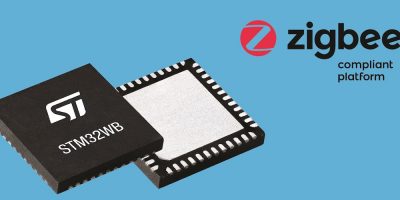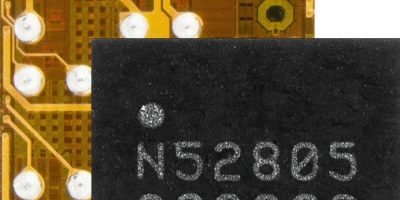Based on Zigbee PRO protocol stacks, Zigbee 3.0 has been added to the STM32WB55 wireless microcontrollers. The company says that STM32 developers can leverage the interoperability and power-saving features of Zigbee to enhance networking for projects such as home automation, smart lighting, smart building, and broader IoT connectivity.
Zigbee 3.0 unifies the features of Zigbee specifications for consumer and industrial applications. Consumer and internet brands have elected to choose Zigbee connectivity for smart home products.
ST’s Zigbee 3.0 software for STM32WB55 includes the Exegin Zigbee PRO protocol stack, which is provided free of charge, and delivered and fully supported by ST. The stack is used in Exegin products certified as Zigbee Golden Units and is approved as a reference stack for use by test laboratories. ST supports 46 Zigbee 3.0 clusters to establish the capabilities of devices. Another21 clusters support legacy products.
STM32WB55 microcontrollers also support Thread and Bluetooth 5.0, with over the air (OTA) update capability. There are 10 STM32WB55 variants, in a choice of package styles and flash density from 256kbyte to 1Mbyte. The company has announced that it will introduce further variants in Q3.
Devices feature the Arm Cortex-M4 with floating point unit, DSP instructions and a memory protection unit (MPU) that enhances application security. Arm Cortex-M0+ co-processor is dedicated to managing the integrated IEEE 805.15.4 radio. The microcontroller’s cyber protection features ensures real time, low layer operations run smoothly without compromising application execution. The RF transceiver has a link budget of 106dB, to ensure reliable connections over distance.
The STM32WB55 devices are based on patented low power microcontroller technologies and integrate features such as radio balun circuitry. These characteristics are designed to help designers meet tight power and size constraints in a range of IoT and wearable devices. There are rich analogue and system peripherals, as well as cyber-protection, adds ST, and ID features including secure firmware installation (SFI), customer key storage, hardware public key authority (PKA), and cryptographic accelerators. Capacitive touch and LCD controllers simplify user-interface integration.
The Zigbee 3.0 software is now included in the STM32CubeWB MCU package, which provides embedded software including low-layer (LL) application programming interfaces (APIs) and hardware abstraction layer (HAL) drivers for STM32WB microcontrollers, as well as Bluetooth 5.0, Mesh V1.0, and Thread libraries, FreeRTOS kernel, FatFS file system and the STMTouch capacitive-sensing library.
The STM32Cube ecosystem includes the STM32CubeMonitor-RF for RF testing and STM32CubeMX for device configuration and code generation.







